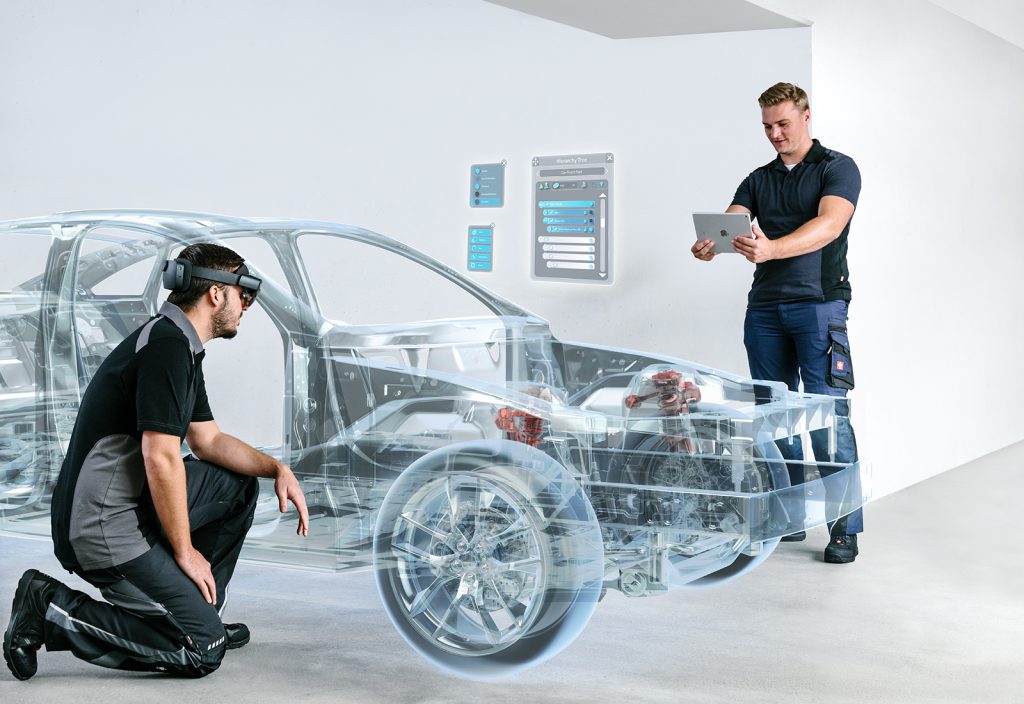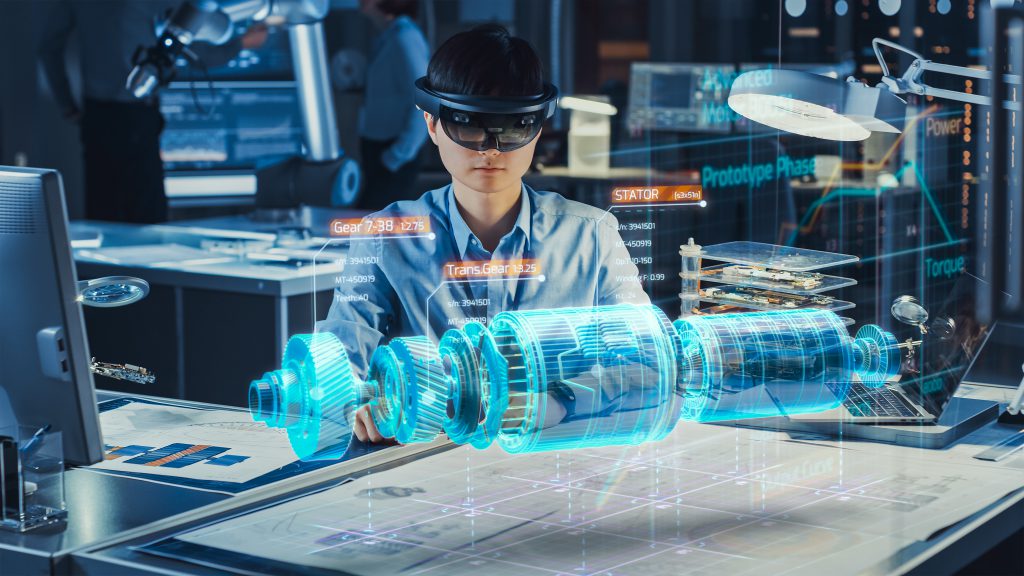Automotive: Where is the Benefit of Augmented Reality?
We see automotive industry players approaching us with questions on why and how to benefit from the usage of Augmented Reality. Our answer: Benefits start in the early stages of production engineering or prototyping all the way to field support for entire fleets in operation. Join us on the discovery of major benefits across different stages of the automotive industry life cycle.
At Holo-Light we focus on the improvement of essential elements within the “cradle to grave” span of the automotive industry[1]. We try to anticipate which major parts of the value chain can be positively impacted or changed by Augmented Reality to add to higher profitability of an OEM and supply chain partners. Engineering, production, quality assurance, and lifetime support of industry specific assets all have enormous improvement potential.

Holo-Light solutions[2] support the work of engineers from the very beginning of a defined OEM program. We foster continuous and iterative 3D visualization of the envisioned product to improve engineering workflows. We provide a real time collaborative Augmented Reality Engineering Space (ARES) to spread critical knowledge and share it across the authorized global engineering community and its associated tool chains.
ARES can lower the cost of physical hardware prototypes significantly (from several dozen down to a few ones). And at the same time, it leads to much better understanding of the design object throughout all relevant stakeholders
The Life Cycle of Cars
The “cradle to grave” span of a proper car series is about twelve years. Out of these twelve years, up to five are spent for research and development: for both the design and development of production facilities and the car itself until day 0, when the first version of a series is officially sold. This phase is named Product Development Program (PDP).
After day 0, assume a midsize SUV in the premium segment, the car will be produced and sold for about 7 years. Operational service and spare part sales might even reach as far as 10-15 years after production of a car has stopped. The beforementioned midsize SUV reaches a total fleet size of 1.5 million up to 2.5 million and creates a revenue potential between 80 bn and 150 bn USD throughout its life cycle. [3]
Throughout all this period OEMs and the respective supply chain partners are obliged to deliver both spare parts and services to fix broken systems, keep a sufficient number of spare parts and, nowadays gaining more importance: manage updates of computing components in the cars. Profitability will be achieved only by those, mastering the complex orchestration tasks of embedding the entire and mostly global supply chain (e.g. gear boxes in specific cars, miles of wiring for all onboard electronic systems, dozens of hardware prototypes etc.).

How AR Supports Profitability at an OEM Level
With this life cycle in mind, the pretty new domain of Augmented Reality needs to proof that it can substantially add value for the automotive life cycle and if so, in which concrete areas.
Our collaborative AR software suite ARES potentially enables savings and frees up time massively. This can be achieved by sharing and co-working on real time 3D models right from the scratch of a new assembly line integration project (see our chemical reference case – digitization at BASF).
Being used at the very early phase of embedded device engineering, all relevant stakeholders in the supply chain can be tied into a well-orchestrated process of collaboration. All involved engineers can participate in real time conferences in which ARES provides multi-user access to the same 3D replication of the to be engineered systems, subsystems or components.
This process enables lean and clear engineering sessions with less room for unclear requirements (all participants see one identical model to work on) and furthermore all noted changes can be automatically played back into the requirements tool chain of a given program and are accessible right from the beginning of a project. Over time, the final product will become more detail enriched along all iterative meetings of the specific engineering groups. The final result will be a digital twin of the real object.

Last but not least, the created digital twins then build the baseline for very accurate and cost-efficient asset management for the entire fleet in operation until decommissioning. This changes how parts in operation can be tracked. Simulations also help to better predict maintenance patterns. In sum, Augmented Reality will have a significant impact on life cycle cost reduction.
If you have further questions on your specific automotive use case for Holo Light solutions, please do not hesitate to contact us directly at info@holo-light.com
[1] Compare M.Bornschlegla, S.Kreitleinb, M.Bregullaa, J.Frankeb in A Method for Forecasting the Running Costs of Manufacturing Technologies in Automotive Production during the Early Planning Phase
[2] ARES, ISAR & Stylus XR best to be used as a kickstart bundle
[3] e.g. Audi Q5 production output numbers


